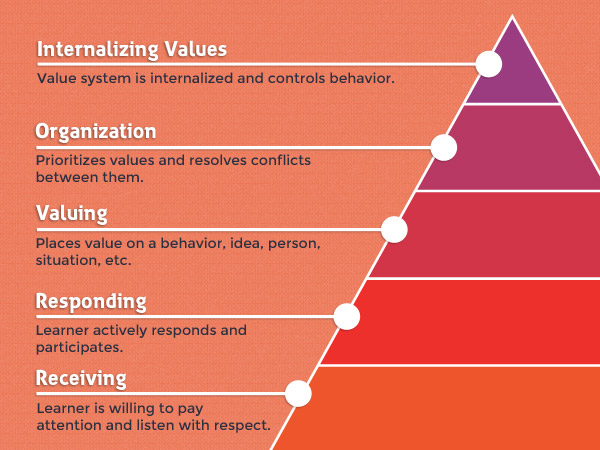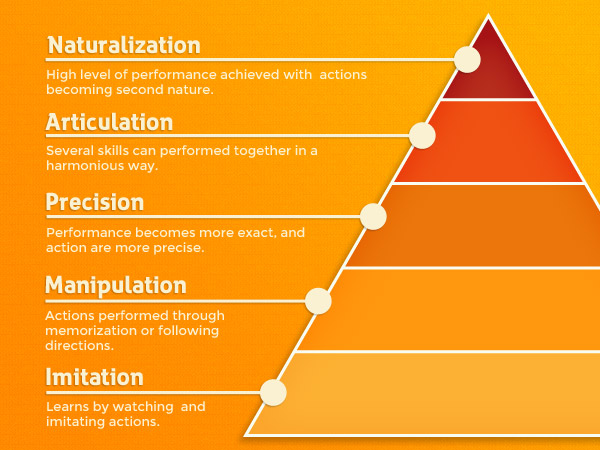Most educators are familiar with Bloom’s (Cognitive) Taxonomy which is based on the following six-level structure:
Bloom believed that the ability to understand and apply knowledge was essential before advanced levels of development, such as analysis, synthesis and evaluation could be attained.
This model is very useful when planning learning objectives and aligning those objectives to differentiated assessment for learning strategies.
However, it is less well-known that Bloom also contributed to the development of taxonomies in all three learning domains; Cognitive (knowledge), Affective (attitude) and Psychomotor (skills).
Bloom devised his Affective Domain Taxonomy with Krathwhol and Masia in 1964. This particular theory advocates an approach for developing beliefs, mindsets, attitudes or behaviours. As per the others, the Affective Domain provides a framework for effective teaching, learning and assessment.

This five-stage model is based on the assumption that the learner is open to, and has a genuine willingness to change. It is perfectly reasonable to expect that some learners could oppose the tutor’s perspective of what is being taught if it is not compatible with the learner’s current beliefs.
It is important to grab the learners’ attention from the outset and create opportunities for them to share their feelings, and address any potential resistance to change.
Ideally, learning should also include links to experiences that develop attitudes and mindsets. In doing so, learners can develop social skills, personal relationships as well as their value systems.
As such, it is probably the most complicated of all three domains and requires more time for learning to be embedded than the others.
This model was finalised by Ravindrakumar Dave, who argued that learners must first observe, imitate skills, and then repeat them from memory before mastery can be achieved.
In order to maximise the learning opportunity, learners should be clear about what they will be able to do by the end of the session (outcomes). The tutor’s demonstration can take many forms, eg in person or using video, before allowing learners to do it for themselves.
Nowadays, the term ‘skill’ covers a multitude of attributes, which means that this Domain extends beyond the original traditionally intended manual and physical skills; tutors should therefore consider this Domain even if they think learning is adequately covered by the Cognitive and Affective Domains.
Further Reading
Bates, B., (2016) Learning Theories Simplified: Sage Publications Ltd.



